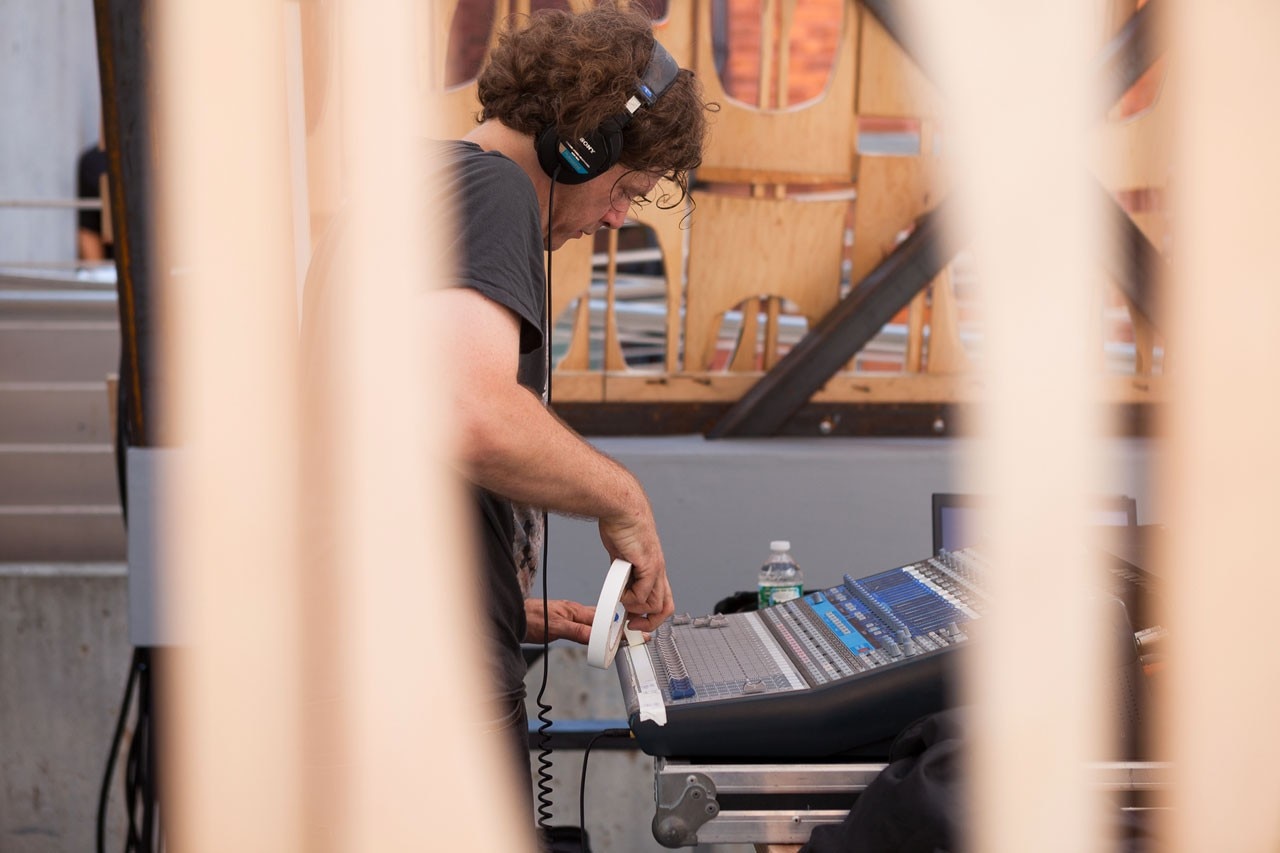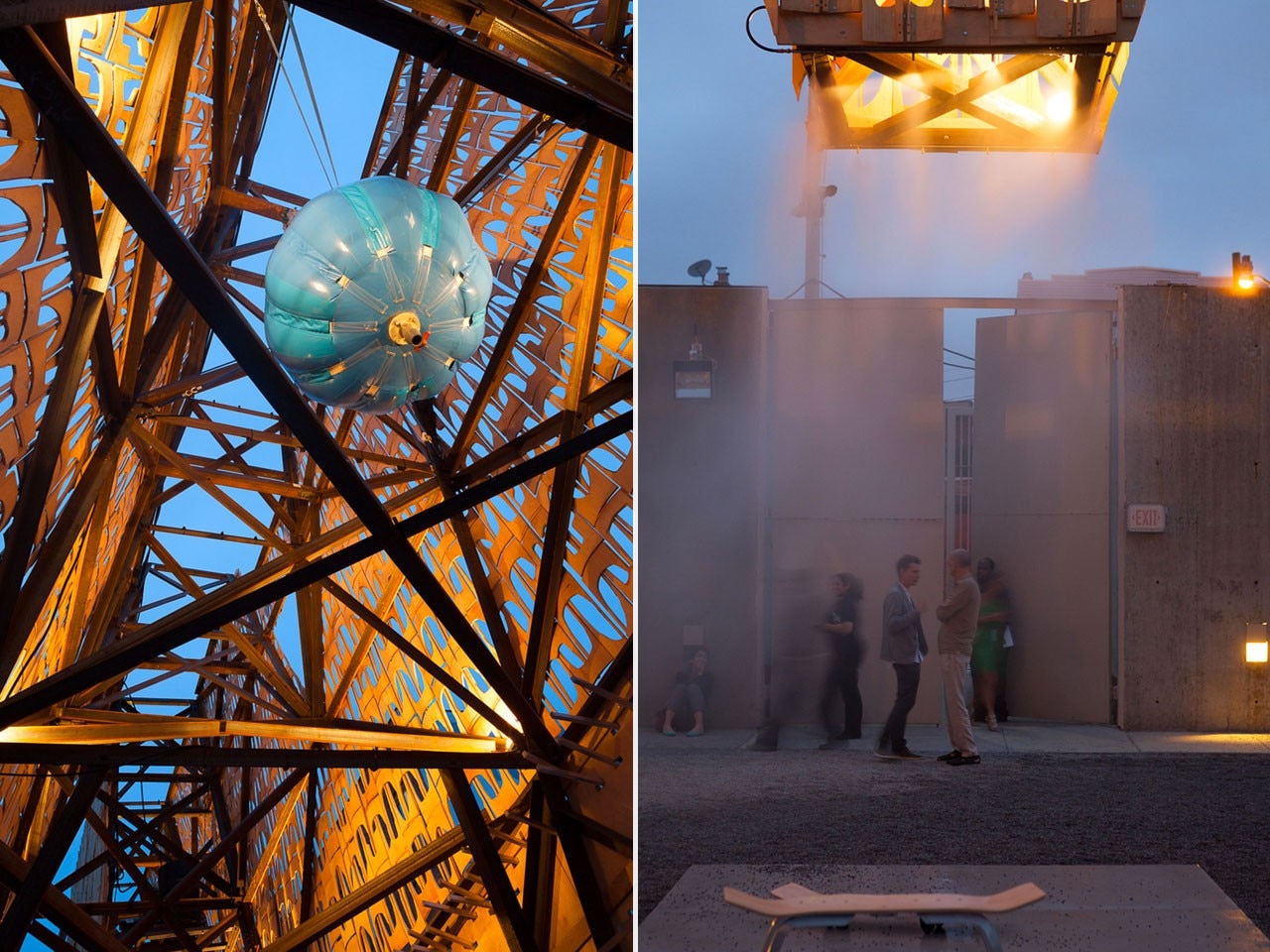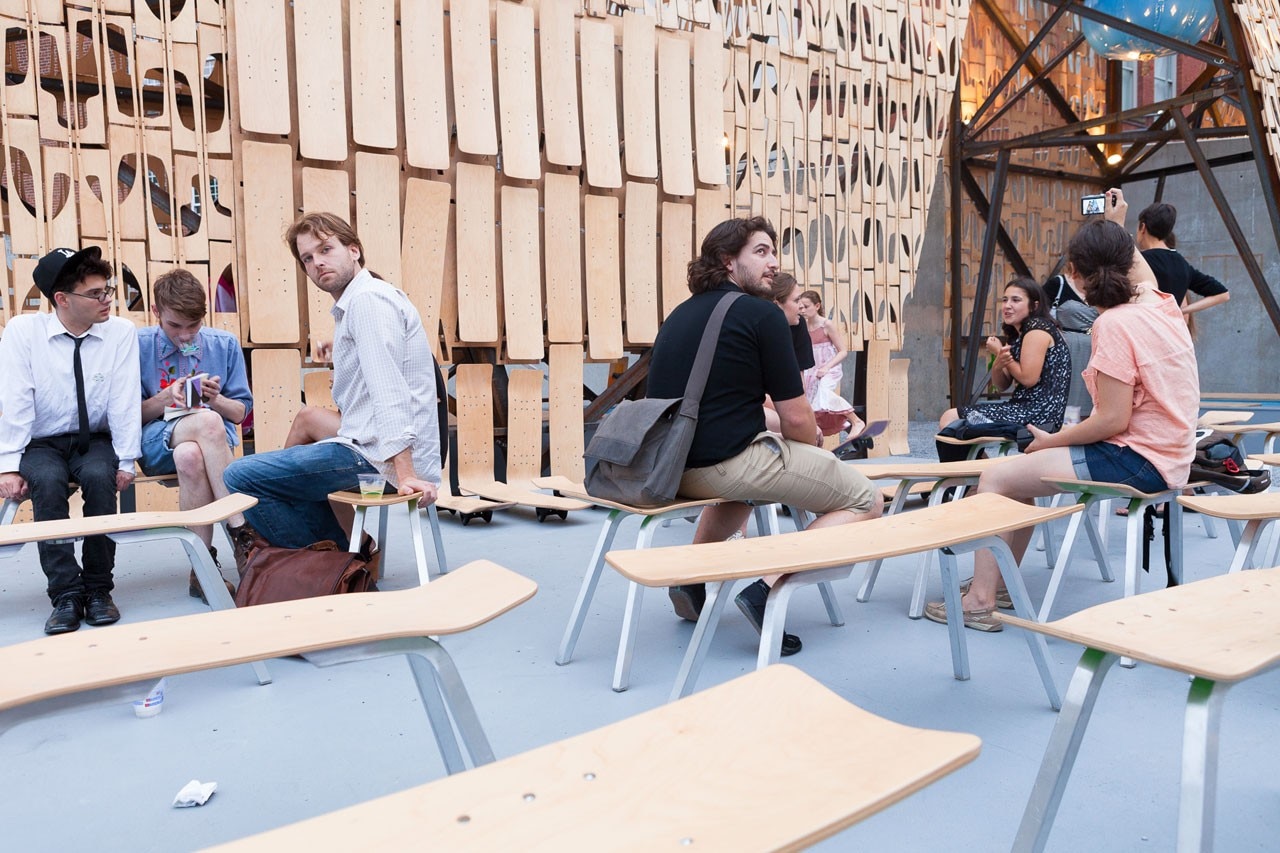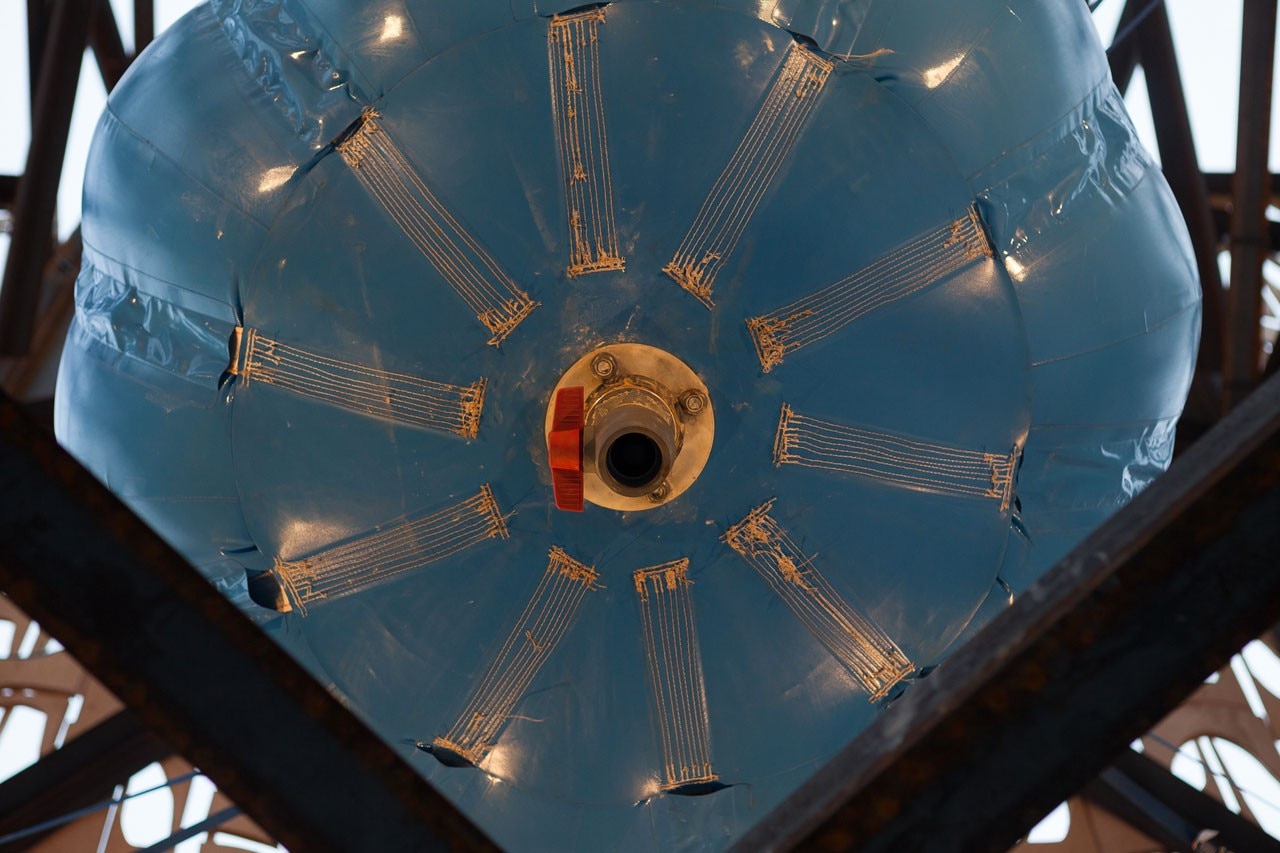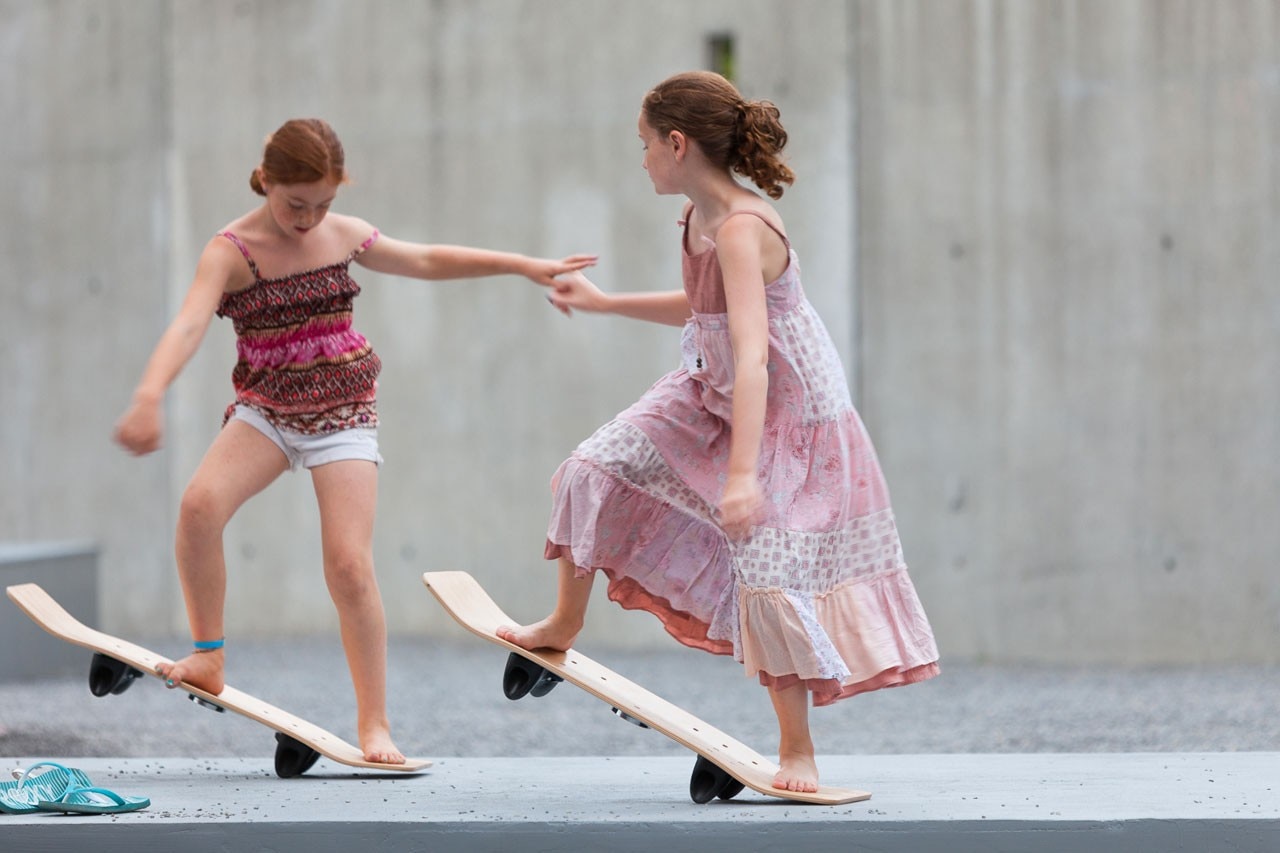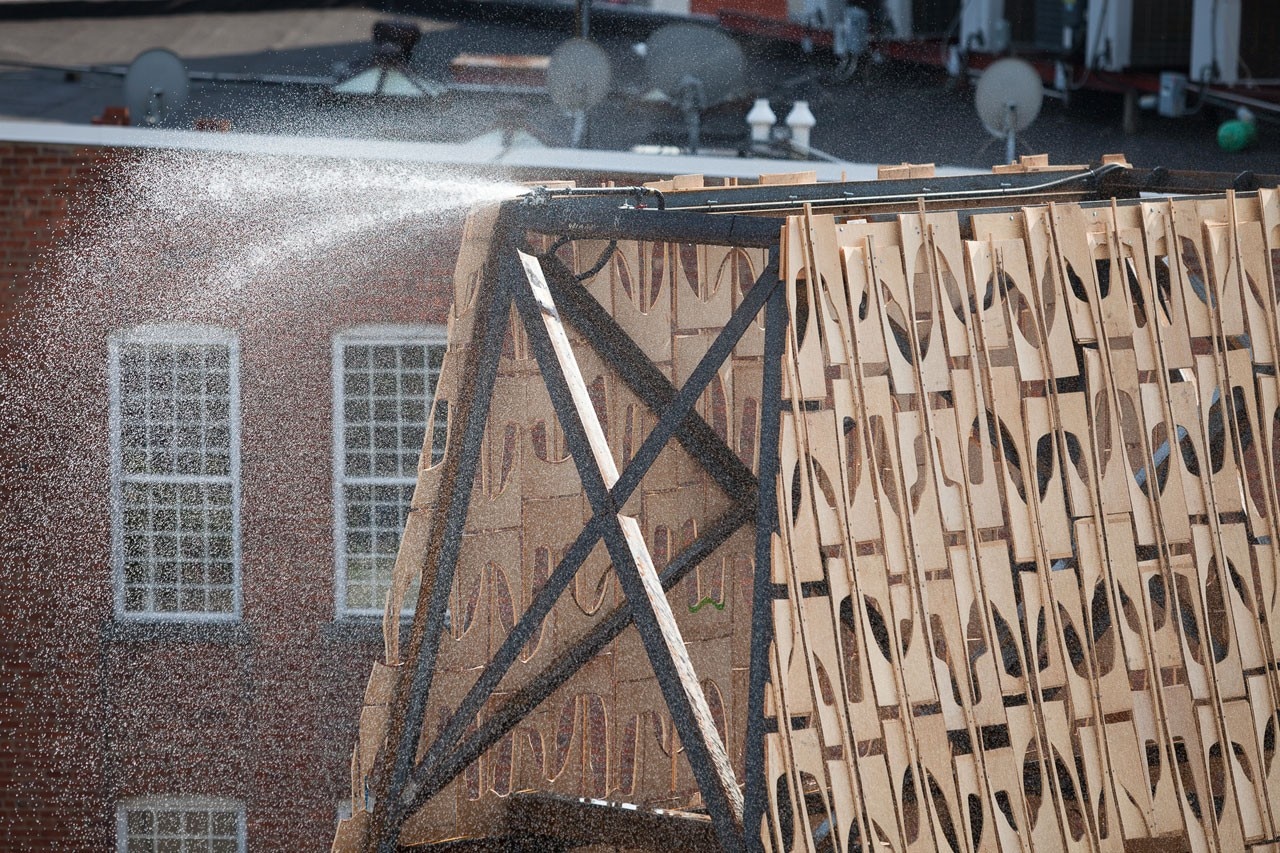
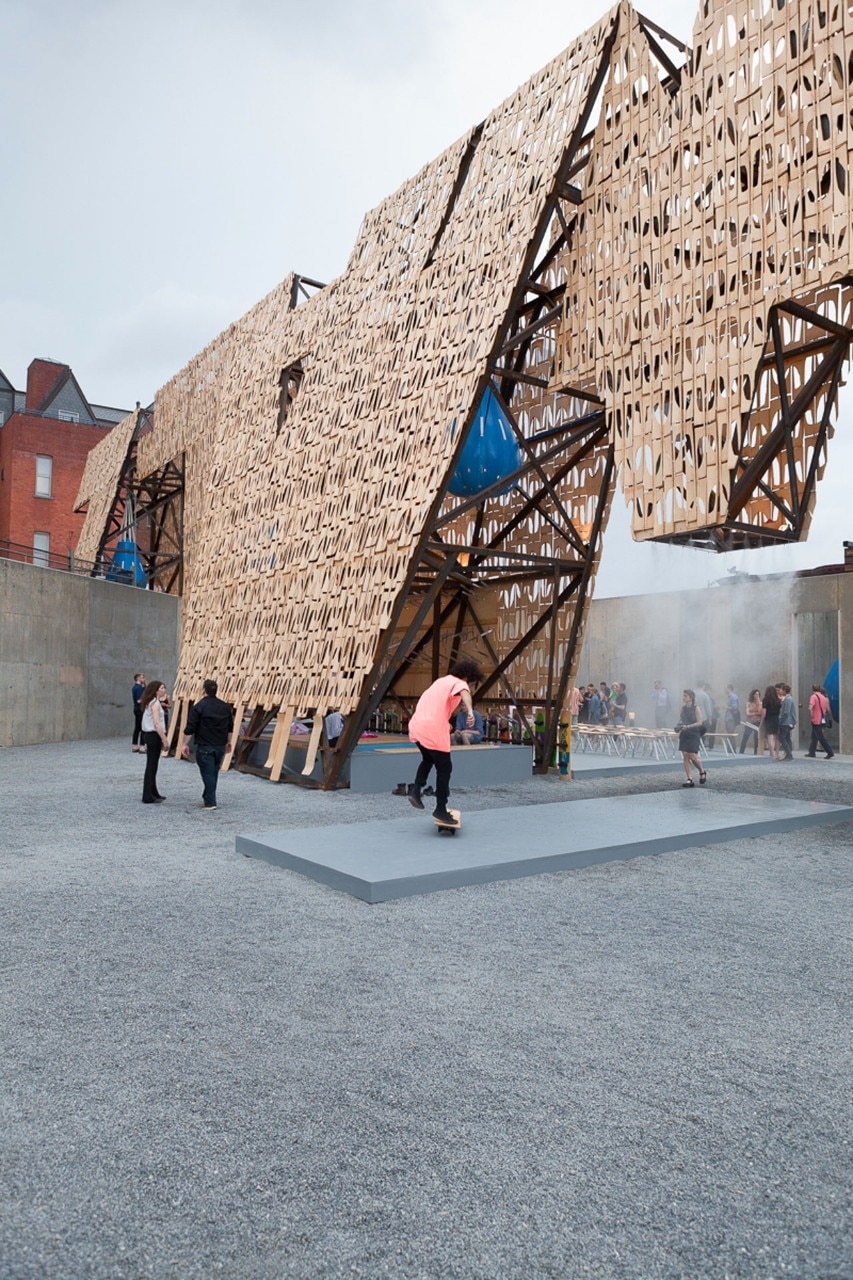
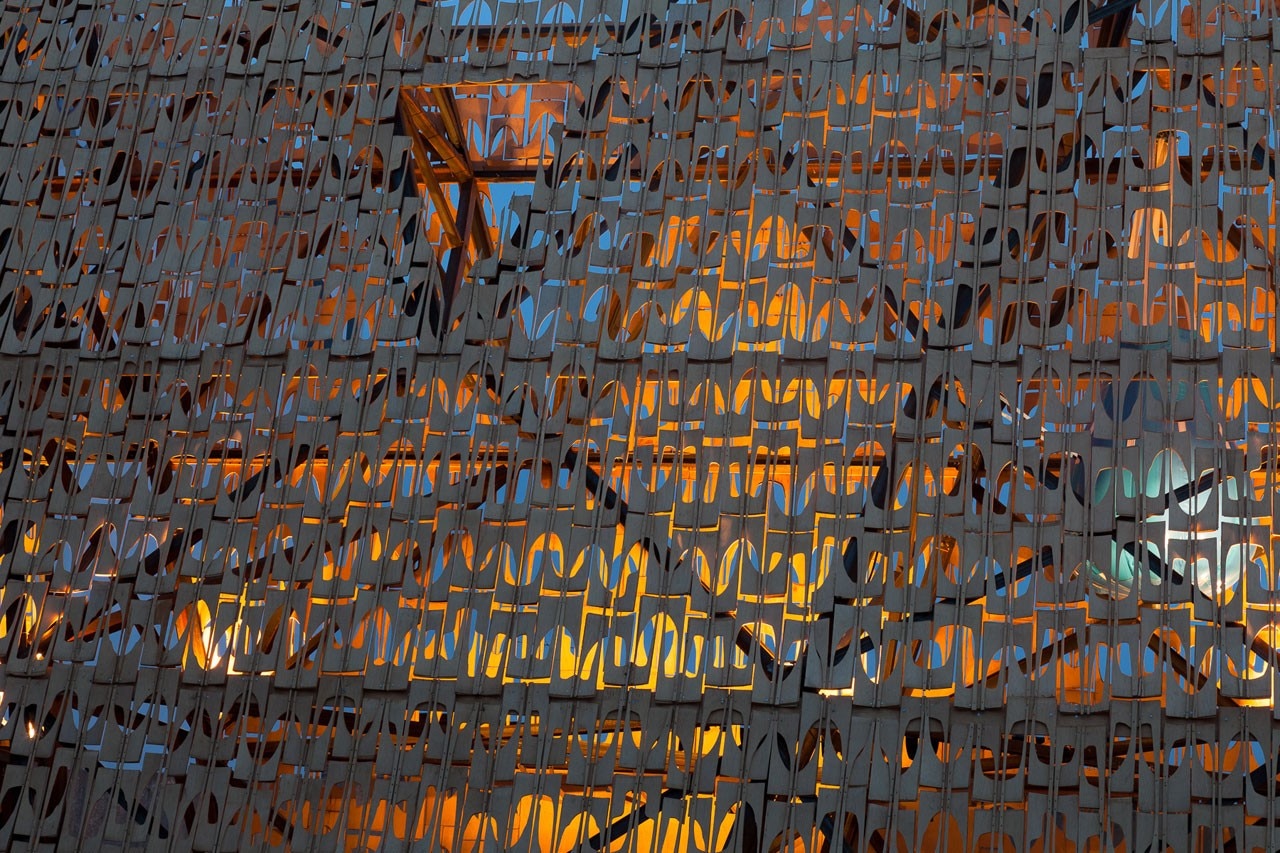
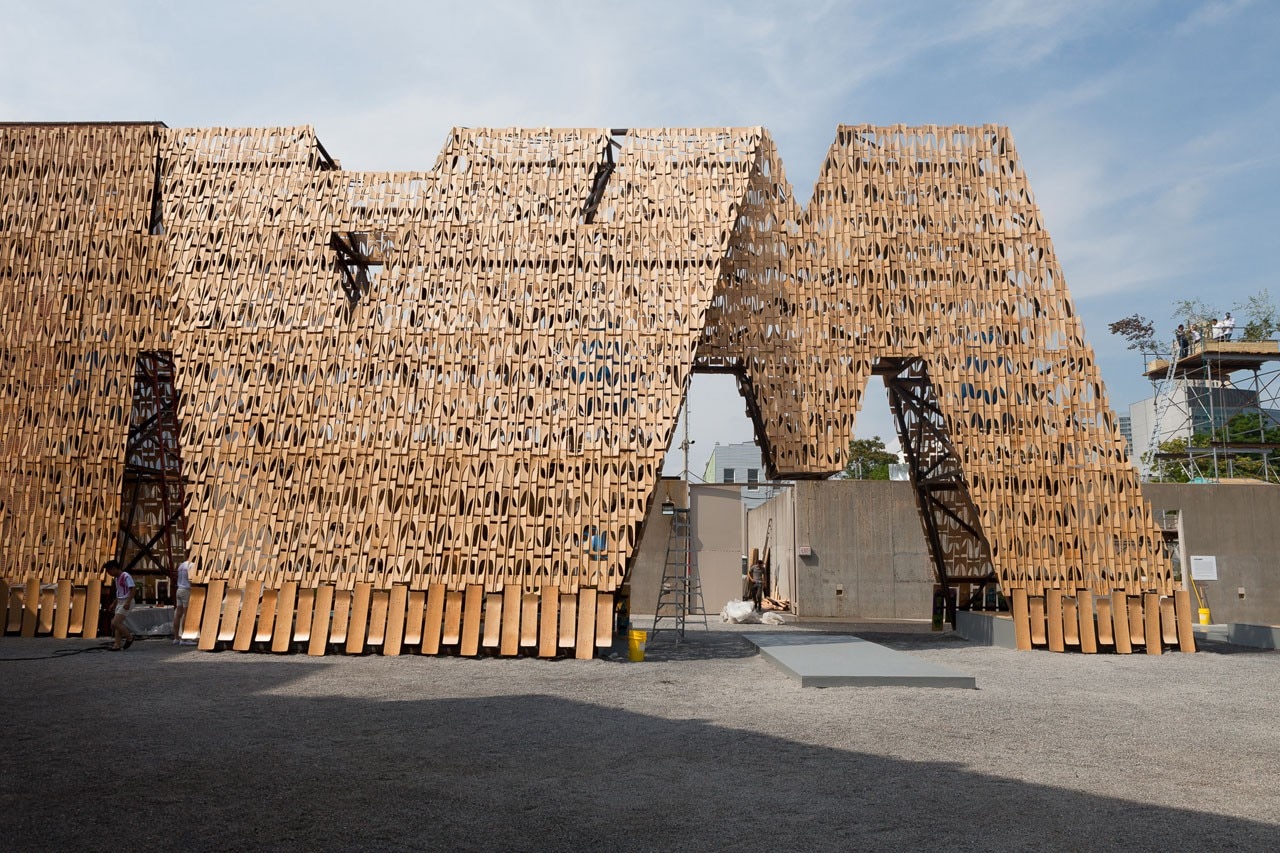
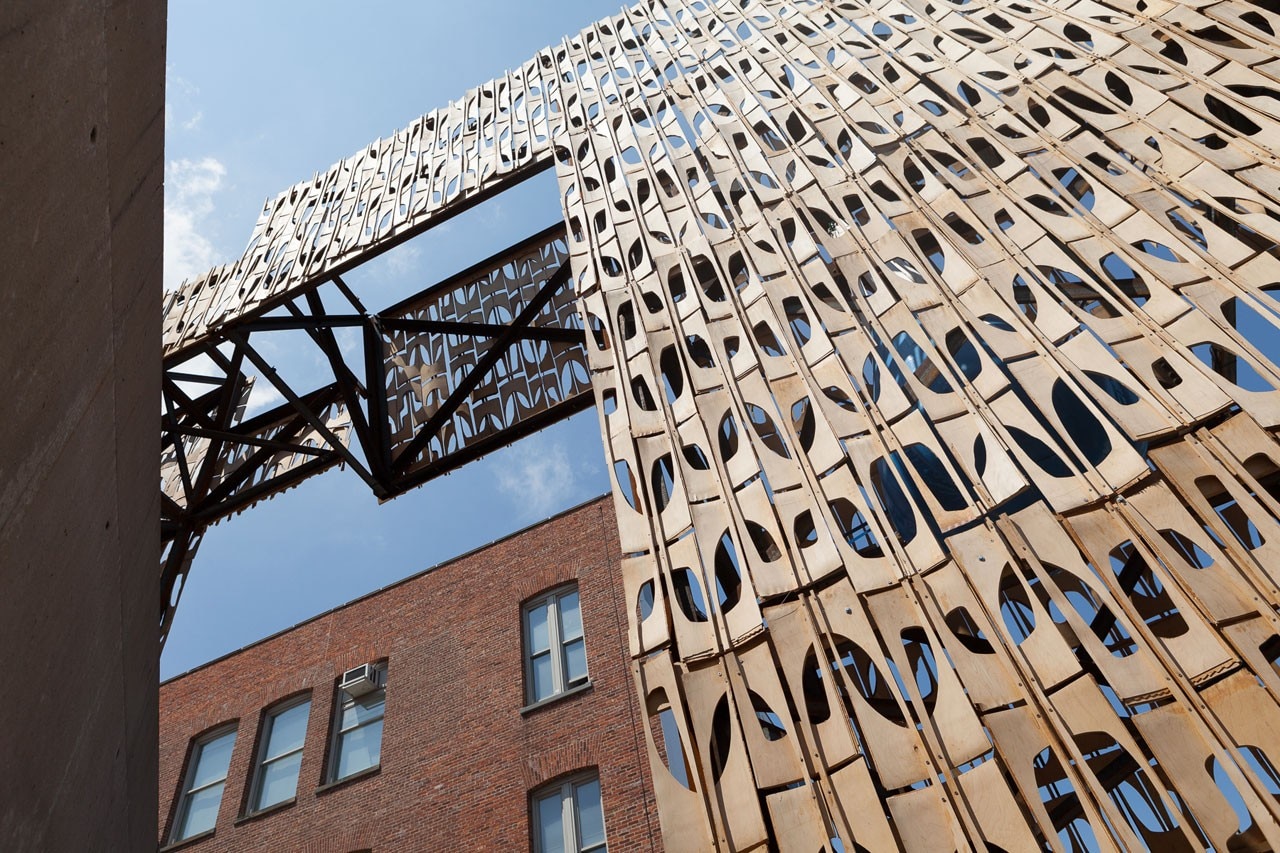
Party Wall accomplishes this best with the creation of four “micro-stages” which produces “flexible experimental space” of undetermined themes available for events such as lectures, film screenings, and performances for up to 300 people. The moveable sitting pieces (made from skateboard blanks) are stored on the lower portion of the wall can easily be taken off and placed where desired in the courtyard, creates spontaneous use and social gathering spaces created by the users themselves, whomever they may be and for what purpose they may have. The sitting pieces are a significant component of the project. It has been demonstrated time and time again the success of having moveable chairs in public spaces available to its citizens, the courtyard is no different and performs as a quasi-public space to interact with the wall that also enables exchange and encounters.
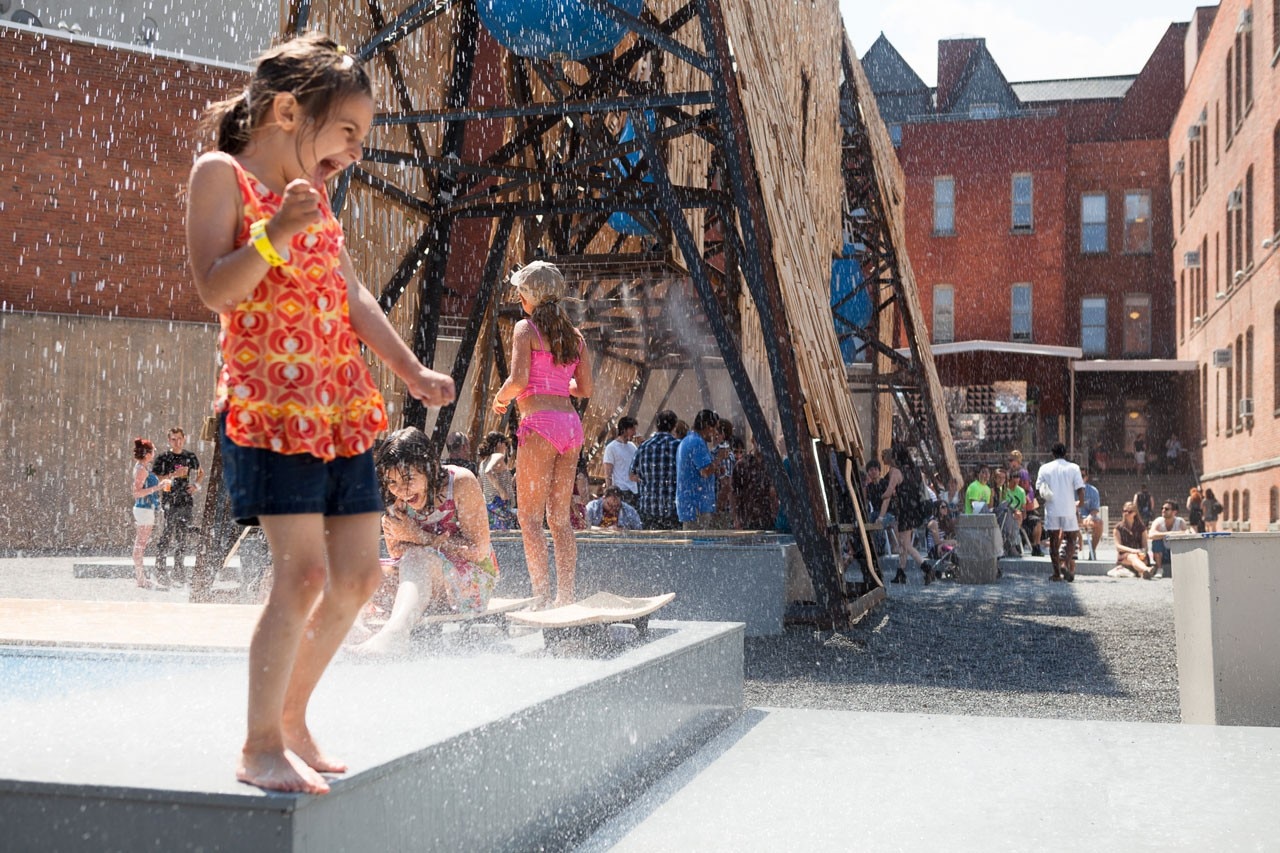
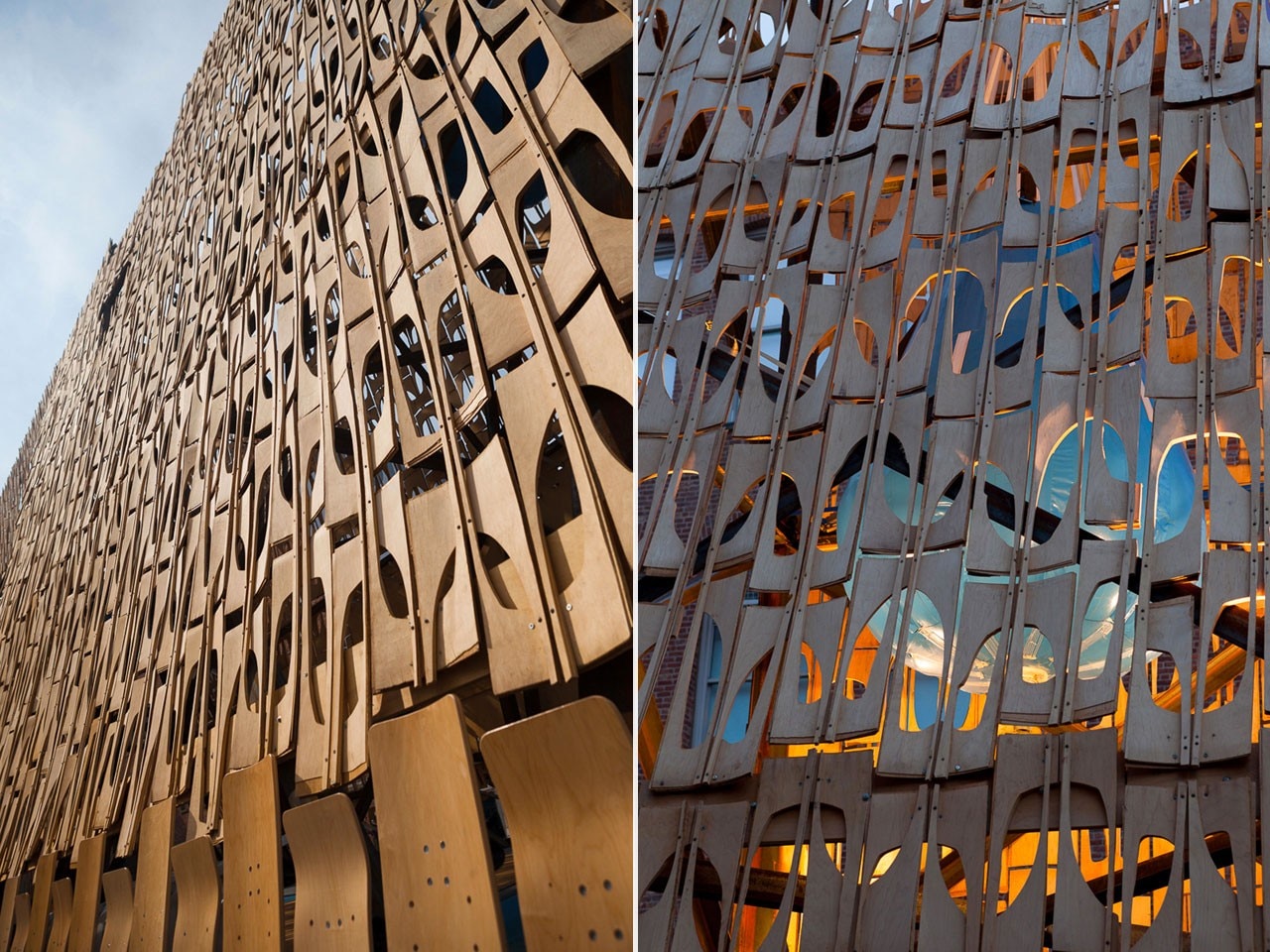
“We talk about context a lot and what I write really revolves around issues of context and the various ways in which context has been engaged in the past” says O’Donnell.
